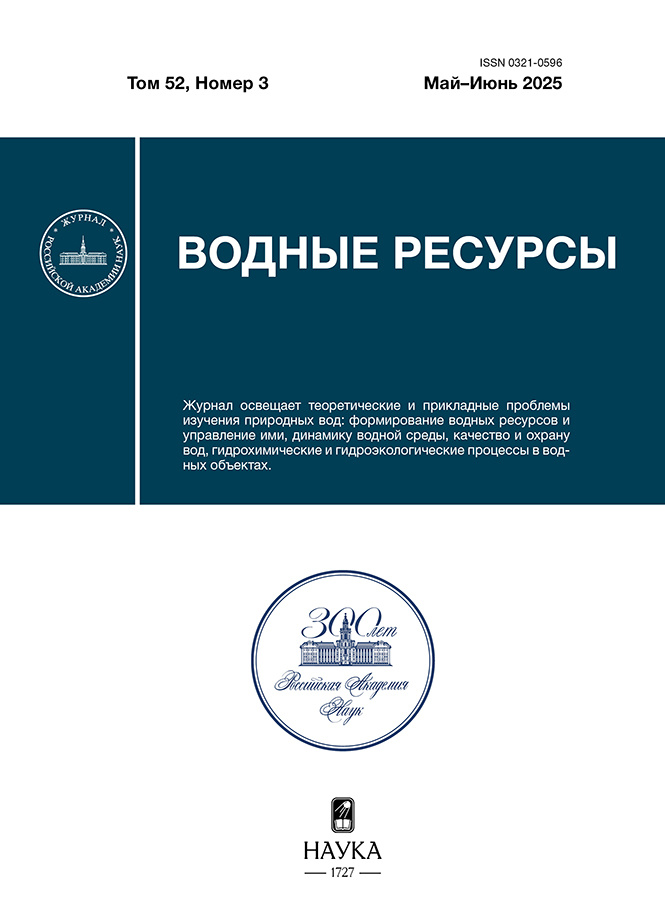Application of a robotic underwater probe for limnological research. A case study of Lake Glubokoe, Ruzsky District, Moscow Region
- 作者: Ostrovsky A.G.1, Zatsepin A.G.1, Kochetov O.Y.1, Shvoev D.A.1, Drozdova A.N.1, Korovchinsky N.M.2
-
隶属关系:
- Shirshov Institute оf Oceanology of the Russian Academy of Sciences
- Severtsov Institute of Ecology and Evolution of the Russian Academy of Sciences
- 期: 卷 52, 编号 3 (2025)
- 页面: 161-173
- 栏目: Гидрохимия, гидробиология, экологические аспекты
- URL: https://journals.eco-vector.com/0321-0596/article/view/687215
- DOI: https://doi.org/10.31857/S0321059625030134
- EDN: https://elibrary.ru/SYCAFI
- ID: 687215
如何引用文章
详细
The paper deals with a new approach to conducting experimental limnologic observations by using the automatic moored profiler Winchi. The autonomous underwater profiler is designed for regular multiparametric measurements of vertical profiles from the lake bottom (maximum depth of 60 m) upward to air-sea interface during an extended deployment (more than 1 month) at a hydrological station. Trial operation of the device was carried out in the lake Glubokoe near Moscow in 2022–2023. Observations made it possible to describe in detail the seasonal evolution of the underwater environment, including the transition from a state of homothermy to a direct thermal stratification with the formation of hypoxia in the hypolimnion in the deep central part of the lake. Intense intraday fluctuations of dissolved oxygen, temperature and water turbidity were found in the near-bottom layer. It has been hypothesized that in the spring-summer period, hypoxia is formed not only due to the barrier effect of the metalimnion, but also due to an increase in oxygen consumption for the microbial oxidation of detritus particles stirred up bottom sediments due to pulsating flows of groundwater discharge.
全文:
作者简介
A. Ostrovsky
Shirshov Institute оf Oceanology of the Russian Academy of Sciences
编辑信件的主要联系方式.
Email: osasha@ocean.ru
俄罗斯联邦, Moscow
A. Zatsepin
Shirshov Institute оf Oceanology of the Russian Academy of Sciences
Email: osasha@ocean.ru
俄罗斯联邦, Moscow
O. Kochetov
Shirshov Institute оf Oceanology of the Russian Academy of Sciences
Email: osasha@ocean.ru
俄罗斯联邦, Moscow
D. Shvoev
Shirshov Institute оf Oceanology of the Russian Academy of Sciences
Email: osasha@ocean.ru
俄罗斯联邦, Moscow
A. Drozdova
Shirshov Institute оf Oceanology of the Russian Academy of Sciences
Email: osasha@ocean.ru
俄罗斯联邦, Moscow
N. Korovchinsky
Severtsov Institute of Ecology and Evolution of the Russian Academy of Sciences
Email: osasha@ocean.ru
俄罗斯联邦, Moscow
参考
- Гавриленко Г.Г., Здоровеннова Г.Э., Волков С.Ю., Богданов С.Р., Здоровеннов Р.Э. Устойчивость водной массы и ее влияние на кислородный режим полимиктического озера // Геополитика и экогеодинамика регионов. Т. 3 (13). Вып. 4. 2018. С. 57–71.
- Глухова С.А., Пинигин О.В., Расторгуев А.В. Роль присдвиговых структур растяжения в субвертикальной фильтрации водонапорной системы Московского артезианского бассейна // Вестн. Моск. ун-та. Сер. 4, Геология. 2023. № 1. С. 97–109. doi: 10.55959/MSU0579-9406-4-2023-63-1-97-109
- Коровчинский Н.М. Пелагический рачковый зоопланктон озера Глубокого в 2017–2021 годах // Гидробиологическая станция на Глубоком озере: Тр. / Под ред. Н.М. Коровчинского. Т. 12. М.: Товарищество науч. изд. КМК, 2022. С. 64–77.
- Садчиков А.П. Температурный режим, прозрачность и распределение кислорода // Биоценозы мезотрофного озера Глубокого. М.: Наука, 1983. С. 181–188.
- Сапелко Т.В., Гузиватый В.В., Кузнецов Д.Д. Комплексные палеолимнологические исследования на озере Глубоком // Гидробиологическая станция на Глубоком озере. Тр. / Под ред. Н.М. Коровчинского. Т. 11. М.: Товарищество науч. изд. КМК, 2027. С. 139–148.
- Соколов Д.И., Ерина О.Н., Терёшина М.А., Вилимович Е.А. Современный гидроэкологический режим озера Глубокого // Гидрометеорология и экология: достижения и перспективы развития. Тр. II Всерос. конф. СПб.: Химиздат, 2018. С. 590–593.
- Шапоренко С.И. Влияние метеорологических условий на развитие анаэробных процессов в димиктических водоемах в зимний период (на примере оз. Глубокое Рузского района Московской области) // Метеорология и гидрология. 2005. С. 84– 92.
- Шапоренко С. И., Киосе С.И. Влияние метеорологических условий на развитие анаэробных процессов в димиктических водоемах в летний период (на примере оз. Глубокое Рузского района Московской области) // Метеорология и гидрология. 2004. С. 89–104.
- Шапоренко С.И., Шилькрот Г.С. Многолетняя изменчивость гидрохимических параметров озера Глубокого / Под ред. Н.М. Коровчинского, Н.Н. Смирнова // Тр. Гидробиологической станции на Глубоком озере им. Н.Ю. Зографа. Т. 9. М.: Ин-т проблем экологии и эволюции РАН, Изд-во ИПП “Гриф и К”, 2005. С. 24–48. EDN VNBCRA
- Щербаков А.П. Гидрохимическая характеристика Глубокого озера // Тр. Всесоюз. гидробиол. о-ва. 1962. Т. XII. C. 5– 41.
- Щербаков А.П. Озеро Глубокое. Гидробиологический очерк. М.: Наука, 1967. 379 с.
- Engelhardt С., Kirillin G. Criteria for the onset and breakup of summer lake stratification based on routine temperature measurements // Fundam. Appl. Limnol. 2014. V.184 (3). P. 183–194. doi: 10.1127/1863-9135/2014/05824
- Ostrovskii A.G., Emelianov M.V., Kochetov O.Y., Kremenetskiy V.V., Shvoev D.A., Volkov S.V., Zatsepin A.G., Korovchinsky N.M., Olshanskiy V.M., Olchev A.V. Automated tethered profiler for hydrophysical and bio-optical measurements in the Black Sea carbon observational site // J. Marine Sci. Engineering. 2022. V. 10. P. 322. doi: 10.3390/jmse10030322
补充文件













